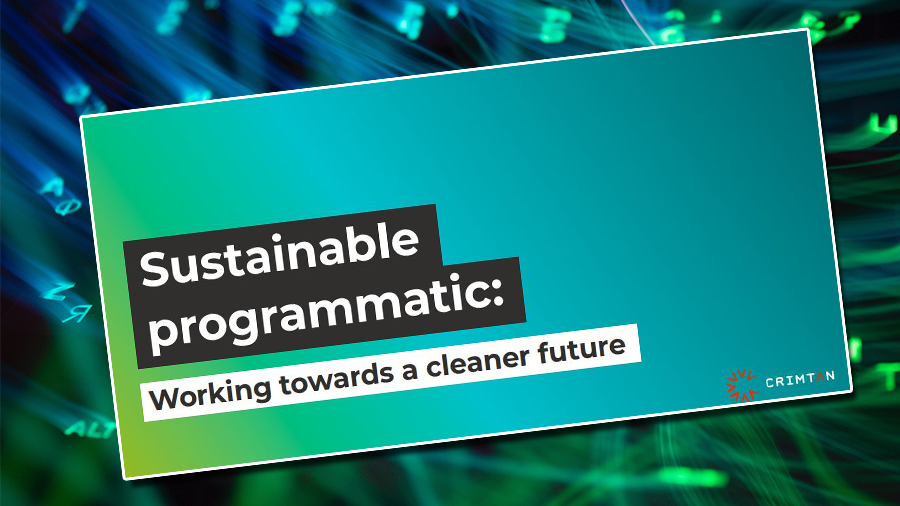Within the B2B advertising sector, sustainable practices are gaining traction, especially in the programmatic and ad-tech domains. With the rise of digital advertising, there are emerging environmental concerns due to the significant computational resources involved in data transfer and targeted ad deliveries to business-focused audiences. This consumption, specifically in B2B programmatic advertising, has been identified as a considerable contributor to global carbon emissions. Programmatic expert, Crimtan, has recently commented on the implications of this issue and the possible solutions.
A revealing analysis disclosed that a sample digital advertising campaign led to emissions amounting to 323 tons of CO2eq. This is analogous to the annual carbon footprint produced by 16 American individuals. Notably, the internet’s annual greenhouse emissions surpass those of the aviation sector, resulting from components like 5G technology and ad exchanges. Digital marketers are now faced with the challenge of curbing this carbon footprint while ensuring effective results.
There are several actionable insights for marketers. One strategy is to lessen an ad’s load time. Certain creative formats and sizes, influenced by factors like compression type, frame rate, view length, and screen dimensions, determine the load time and consequently the carbon emissions. Switching from video to display advertising can make a notable difference; a 15-second video ad can generate carbon emissions 85% higher than its display counterpart.
Crimtan has provided an interesting perspective on the use of colours in ads. The data required for darker colours is significantly more than that for lighter hues. By choosing lighter colours and limiting the palette to one or two shades, it’s possible to cut emissions by as much as 16%.
Other considerations include compressing display ads and opting for smaller display dimensions. To illustrate, a billboard’s emissions are staggeringly 1,508% more than a 300×50 mobile banner. Employing compressed formats for display ads can maintain image quality. Optimal results can be achieved by also downsizing images and using compact formats like JPEG.
For long-term sustainability in advertising, it’s essential to innovate and adapt. Crimtan’s attention time tool is one such resource, allowing marketers to extend their analytical reach beyond mere viewability and delve deeper into campaign effectiveness. Research indicates that by excluding advertising on domains with attention times falling below 0.5 seconds, there’s potential to cut carbon emissions by a significant 63%.
Effective frequency capping is another strategy that marketers can employ. Bombarding consumers with excessive ad frequencies is detrimental not just to brand-consumer relationships but also in terms of carbon footprint. Through the right frequency caps, advertisers can streamline communication, thus curbing carbon emissions.
A more efficient programmatic bidding process can also lead to substantial carbon reductions. Simplifying the process, especially by limiting the number of intermediaries, can minimize the associated environmental impact. By consolidating the auction process, there’s potential for advertisers to further curtail carbon emissions in the advertising ecosystem.
Paul Goad, the CEO of Crimtan, commented, “Considering our environmental impact is paramount. It’s about understanding both immediate and long-term ramifications. We are committed to minimizing our carbon footprint, addressing challenges that have lasting effects on our planet and its inhabitants.”
For professionals keen on enhancing the sustainability of their programmatic campaigns, Crimtan’s comprehensive guide can be accessed here.


 Whether you want to learn how to use LinkedIn, X or Facebook for marketing, or need to brush up on business skills like leadership, presentation skills or managing meetings, you will find something to enhance your professional skills with these on-demand courses.
Whether you want to learn how to use LinkedIn, X or Facebook for marketing, or need to brush up on business skills like leadership, presentation skills or managing meetings, you will find something to enhance your professional skills with these on-demand courses.